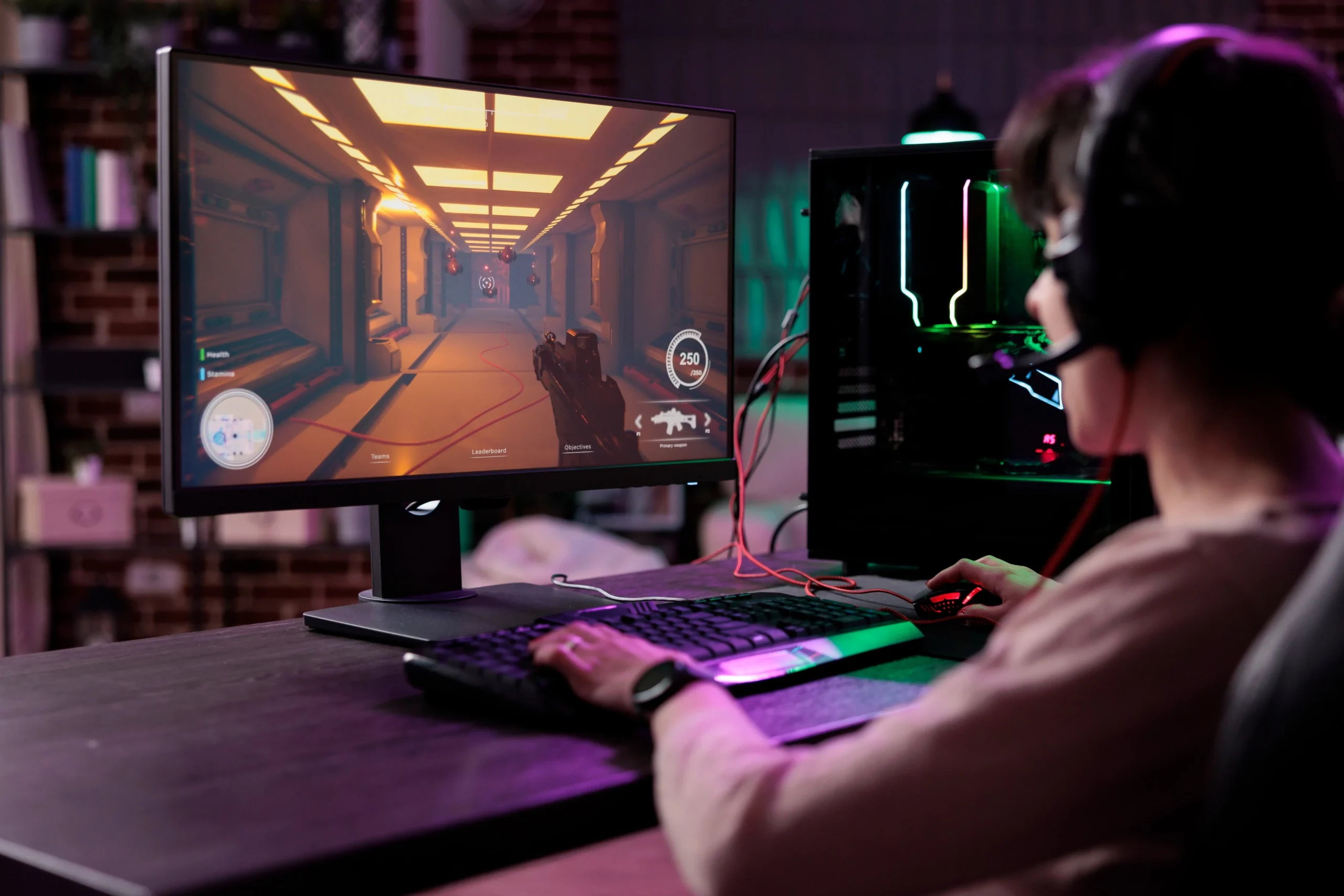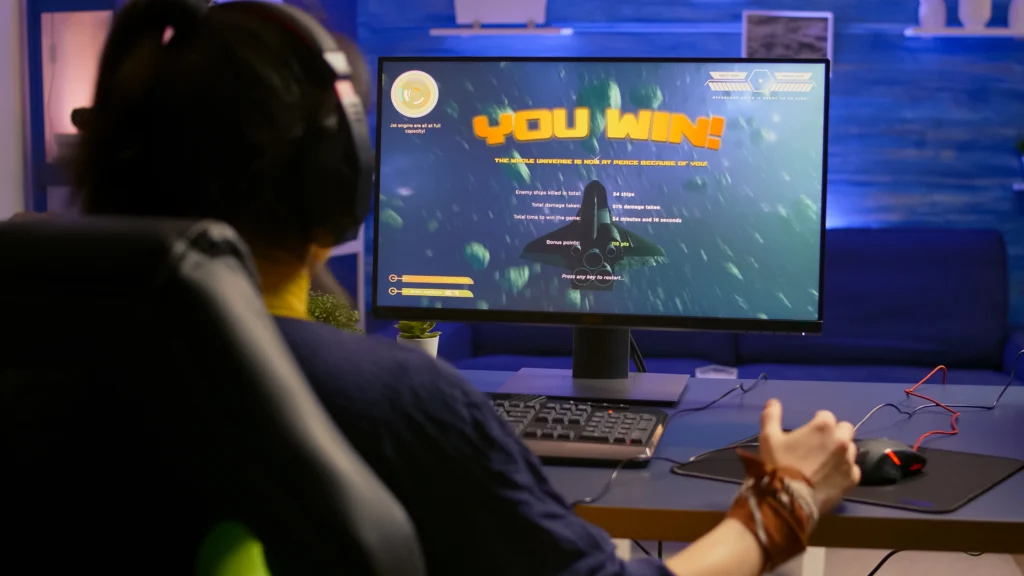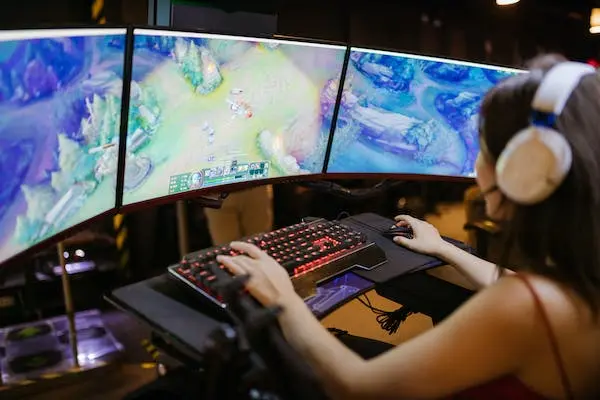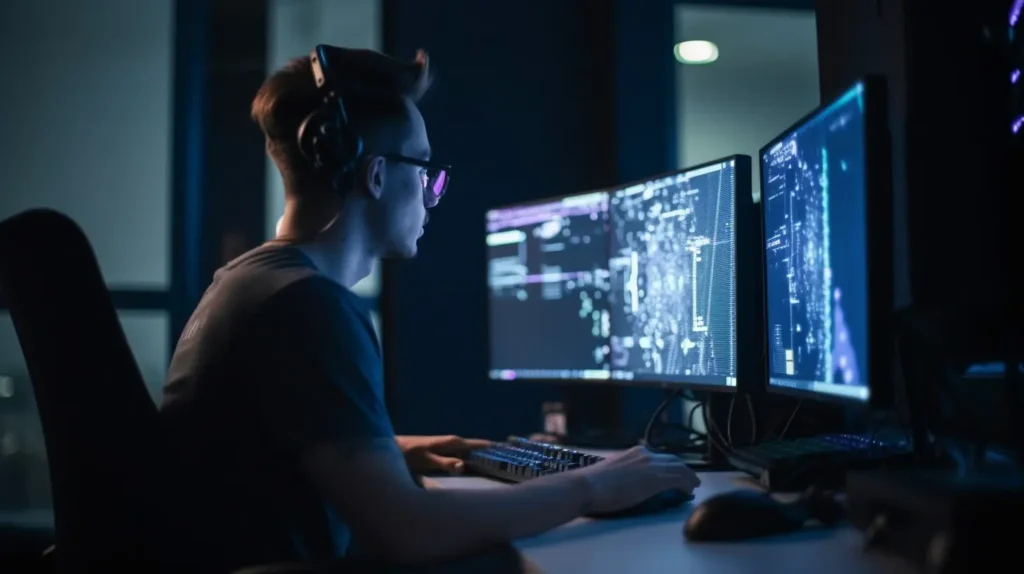No Code Game Creation: Empowering Creativity Without Coding

Video game development has undergone a remarkable transformation over the past few decades. It used to be that making a game required complex coding knowledge. But now, making fun worlds is more approachable than ever with the advent of no-code game development platforms.
These types of game engines open the doors for aspiring developers, artists and storytellers. A no coding game maker now makes it easy to get started. Whether it’s a whimsical 2D platformer or an expansive 3D adventure, it’s possible to make games using drag-and-drop functionality. With these tools, 3D game makers without coding are possible to use whatever your coding experience. They cater to hobbyists just looking to make fun projects, and serious designers aspiring to have the next big hit. And with cloud-based platforms, these platforms are usable even on lower end machines.
As we delve into the world of game makers without coding, we’ll explore how these platforms work, and how they have helped developers get started making games. We’ll look into the features, benefits, and potential of no-code development and different platforms that are available. And we’ll see what the future holds for no-code developers.
Table of Contents
- 1 The Rise of No-Code Game Development Platforms
- 2 Exploring the Types of Games You Can Make Without Coding
- 3 The Advantages of No-code game makers
- 4 Choosing the Right No-Code Game Maker for Your Project
- 5 How to Start Building Your Game
- 6 Improving and Launching Your Game
- 7 The Future of No-Code Game Development
- 8 Game Development as an Educational Tool
- 9 Conclusion
The Rise of No-Code Game Development Platforms
The No-Code Philosophy and Its Impact on Game Creation
No-code game makers have transformed the game development process, making it accessible to a broader audience. These platforms allow creators to concentrate on the storytelling, aesthetics and gameplay mechanics without getting lost in code syntax and debugging.
Key Features of No-Code Game Makers
There are several features which are often seen in no-code game makers. We’ll cover some of the below:
- Drag-and-Drop Interface: By simply dragging and dropping elements, creators can build scenes, characters, and logic flows. This approach allows for a different way of working out how elements interact with each other, instead of writing actual code.
- Visual Scripting Systems: These systems replace lines of code with visual blocks that can be connected to define game logic. These provide an easier to understand way to visualize the flow and structure of the interactions between game elements.
- Asset Libraries: Some no-code platforms may come with a library of pre-made assets, including 2D sprites and 3D models. These provide a starting point to design games without needing to create original art.
Advantages for Use
The beauty of no-code game makers is that they allow beginners and non-coders a way to make their games. Because they don’t require knowledge of an actual programming language, these platforms allow for a more diverse group of creators who may have ideas for games but are unable to write code for them. This allows for greater emphasis on creativity and vision, instead of technical ability.
Educators have also found no-code game makers as a great tool for teaching. These platforms help demonstrate the principles of game design and logical thinking without prerequisite programming knowledge. They also provide a practical, hands-on approach to learning for students to see the immediate impact of their design decisions in real-time, making the learning process more engaging and rewarding.
Exploring the Types of Games You Can Make Without Coding
With these no-code game makers, you can develop a wide range of genres. Some examples include:
- Casual Games: Ideal for quick, engaging gameplay, no-code platforms are perfect for creating casual games. These are games that users can play to pass the time, like puzzles, match-three, or simple strategy games.
- Adventure and Role-Playing Games (RPGs): For those interested in narrative-driven experiences, no-code tools have created some famous adventure games and RPGs. Creators can focus on world-building, character development, and story arcs.
- Educational Games: No-code platforms are a great tool for educational needs, as creators can make interactive learning experiences that make lessons fun and accessible.
- Simulation Games: Several simulation games that replicate real-world activities are made by using no-code solutions. These provide a sandbox environment for users to explore.
Leveraging 2D and 3D Game Creation Without Coding Knowledge
2D game maker no coding platforms are great tools for making two-dimensional worlds, like platformers and RPGs. There are also 3D game makers without coding that allow for immersive three-dimensional spaces, and have tools that let you sculpt, texture and animate within a fully 3D environment.
The Flexibility of Multiplayer and Single-Player Game Development
- Multiplayer Games: No-code platforms that come with built-in networking capabilities can free creators from the complexities of server-side coding, enabling them to focus on multiplayer dynamics and social interaction features.
- Single-Player Experiences: Single-player games remain a staple, and no-code tools ensure that these experiences can be as rich and complex as their multiplayer counterparts.
Customization and Expansion
Depending on the platform, some no-code game makers can provide customization tools with ready-to-use elements. For example, some platforms provide tools to modify existing assets or import your own. And creators can also create unique gameplay mechanics and rules to define how the game works and how elements interact. This can all be done in the no-code interface.
The Advantages of No-code game makers
No-code game development platforms offer many advantages to help the game creation process. Let’s dive into some of the core benefits.
Accessibility for Non-Programmers and Beginners
No-code game development platforms are especially useful for those who lack knowledge of a specific programming language. With drag-and-drop functionality, these platforms allow for a greater number of aspiring creators to get started making a game instead of getting bogged down in technical complexities. This expands the audience of game creators and provides an opportunity for developers with more diverse backgrounds.
This means there are lower barriers for 2D and 3D game making without coding. People with varying levels of technical expertise can participate in game creation, which can impact how games are made and lead to a richer variety of gaming experiences.
Speed of Development and Iteration
One of the advantages of using a game maker without coding is the speed at which a concept can move from ideation to a playable prototype. Traditional coding can be time-consuming, as developers need to wrestle with debugging and syntax. No-code platforms streamline this process by removing those blockers, which can enable faster prototyping and iterative design.
Choosing the Right No-Code Game Maker for Your Project
Diving into the No-Code Landscape: 2D and 3D Game Makers
There are many options for both 2D and 3D game creation using no-code development tools. Choosing the right platform is crucial to ensuring that you can bring your vision to life. For 2D game projects, platforms that specialize in sprite-based graphics and tile-mapping with asset libraries is an easier starting point for beginners. And 3D game makers without coding platforms may offer pre-built templates and environments that can be customized for different game projects.
Key Features to Look for in No-Code Game Development Platforms
When determining what no-code game development platform to use, look for features which cater to your specific needs. For example:
- Visual Scripting Tools: These should be robust yet intuitive to use. Make sure it’s easy to get started, but still has enough features to build more complex games as your game design skills improve.
- Asset Libraries: A wide selection of ready-to-use graphics, sounds, and animations can significantly expedite the game development process.
- Multiplatform Support: Make sure it’s easy to publish games across various platforms, including web browsers, mobile devices, and desktops. This ensures that you have a wide audience for your game.
- Community and Support: A strong community and responsive support team can be invaluable, particularly when you’re still learning how to use the platform.
How to Start Building Your Game
To begin building your game on a no-code platform, follow these steps:
- Define Your Game Concept: Clearly outline the type of game you want to make, its rules, and goals. This is the starting point, so you want to make sure you understand where your game is headed.
- Choose the Platform: Select a no-code game maker that fits your project’s needs and your level of expertise.
- Learn the Basics: Dive into tutorials, forums, and documentation to understand the platform’s capabilities and understand how you can make your game..
- Make the Core Gameplay: Start with a very basic core gameplay loop to begin your project. Remember, you don’t need to make a perfect game to start!
- Iterate and Improve: After you have the core gameplay mechanics down, you can start adding features. Get feedback and refine the gameplay, visuals and player experience.
Improving and Launching Your Game
Creating a game without coding doesn’t mean you need to compromise on quality, especially when it comes to graphics and sound. A no-code game maker can still use game assets and design interfaces to create a great player experience.
Remember, the visuals of your game are its first impression on players, and a key retention factor. High-quality graphics and assets can not only be found in asset libraries, but also game design websites and other online sources. The challenge isn’t necessarily creating visuals but instead about choosing the right ones with an eye for consistency and performance. You want your game to not only look cohesive, but also run smoothly across various devices. You can also customize any assets that you find in order to give your game a unique flair.
Sound design in games is more than just a looping background track; it includes the selection of sound effects, the ambience of the setting, and the voices that tell your story. There are many platforms that offer these files, and no-code development tools can bring these elements into the game to bring the world to life. When you add them, make sure to align sound effects with actions and layer sounds to create depth. This will significantly improve the player’s immersion into your game.
Your players are a valuable source of insight when it comes to refining your game’s visuals and sounds. Encourage feedback from your players and run beta tests to find ways to engage with your community and improve your game. This will ensure that you have a fun and immersive experience for your audience.
When you launch your game, some no-code platforms provide reports for you to see how your game is performing. This provides insights into key metrics which can help you improve your game even more. Remember, making a game is an iterative process, and having performance data at your fingertips can help you improve your game and player retention.
The Future of No-Code Game Development
As we look towards the future, there are many advancements that are pushing the gaming industry forward. Let’s look at some trends in game development and opportunities for developers, educators, and entrepreneurs.
The Growing Trend of No-Code Development
There has been an increase in the number of no-code development tools over time. These platforms help to empower a new wave of creators who don’t necessarily need programming skills in order to make a game. These tools have, over time, become more robust, user-friendly, and powerful, suggesting that the line between professional game development and hobbyist creations becomes increasingly blurred.
Advancements in No-Code Technology
There have been a great deal of technological advancements in AI, machine learning, and cloud computing, which improve the capability of no-code game development platforms even further. Future 3D game makers with no coding requirement may offer more sophisticated physics engines, enhanced graphics, and even assist in design, which reduces the time from concept to launch and opens the door for more complex and polished game creations, even from indie developers.
Game Development as an Educational Tool
No-code game development can greatly help educational institutions. It offers a practical, hands-on approach to learning and teaching coding logic, problem solving, and design thinking without the steep learning curve of learning a programming language and syntax.
Conclusion
Throughout this post, we’ve discussed how no-code game development platforms make creating games not only accessible but also powerful tools to bring gaming worlds to life. The ease of use offered by 2D and 3D game makers without coding make the developer landscape so much more expansive and vibrant.
In this field, Moddio stands out as a comprehensive solution for anyone looking to start game development without coding experience. It provides not only a visual-scripting interface that allows creators drag-and-drop code, but also a vast asset library so it’s easy to get started. And Moddio includes all the features necessary for multiplayer games right out of the box for free, such as netcode and server hosting/orchestration, as well as social features like moderation and in-game chat. This means that beginner creators don’t even need to learn how to set up the backend infrastructure which can be very difficult and time-consuming to build.
Moddio is an easy-to-use platform that’s perfect for beginners who don’t know how to code. At the same time, it is jam-packed with enough features to build complex games like MOBAs and fast-paced shooter games. This means everyone from educators to hobbyists, and entrepreneurs can experiment, learn, and produce games that previously required professional developer knowledge.
Whether you’re taking the first step into game design or looking to streamline your game development process, Moddio is the perfect gateway to an all-in-one no-code game-making experience that is worth exploring. There has never been a better time to start your journey into the world of game making without coding.



